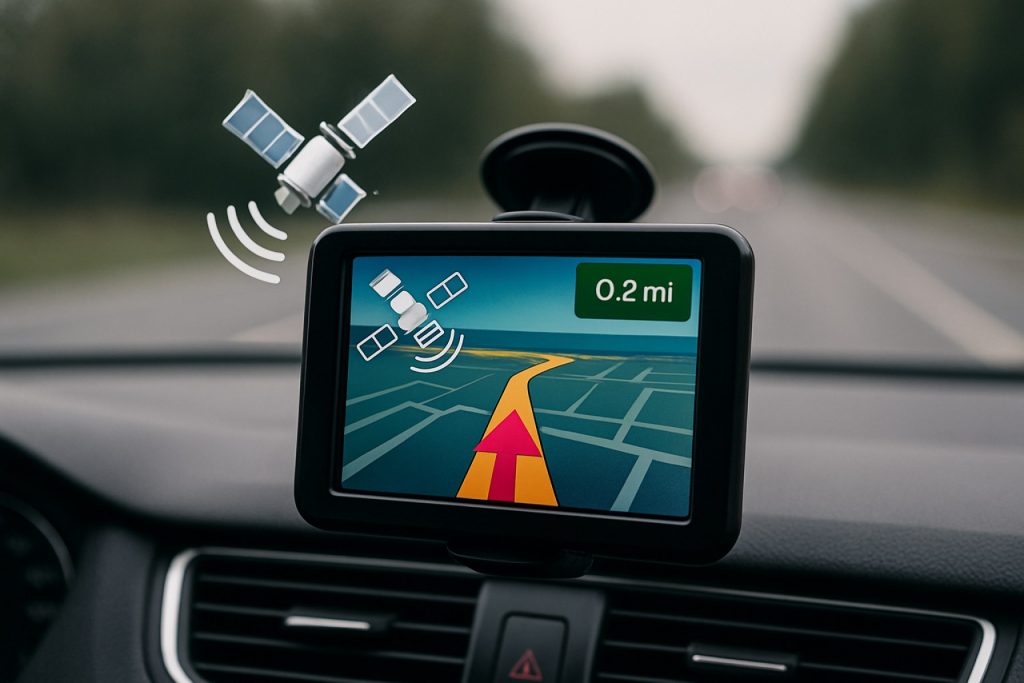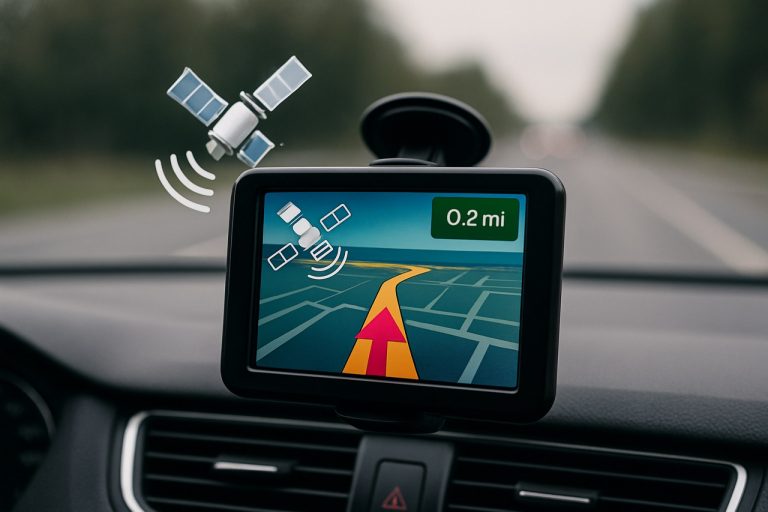
Satellite Navigation Signal Authentication Systems in 2025: How Advanced Security Protocols Are Transforming Global Navigation. Explore Market Growth, Disruptive Technologies, and the Road Ahead.
- Executive Summary: Key Findings and Market Highlights
- Market Overview: Defining Satellite Navigation Signal Authentication Systems
- Drivers and Challenges: Security Demands, Spoofing Threats, and Regulatory Push
- Market Size and Forecast (2025–2030): Growth Projections and 18% CAGR Analysis
- Competitive Landscape: Leading Players, Startups, and Strategic Alliances
- Technology Deep Dive: Authentication Protocols, Signal Encryption, and Anti-Spoofing Innovations
- Regional Analysis: Adoption Trends in North America, Europe, Asia-Pacific, and Emerging Markets
- End-User Segments: Aviation, Maritime, Defense, Automotive, and Critical Infrastructure
- Investment and Funding Trends: Venture Capital, M&A, and Government Initiatives
- Future Outlook: Next-Gen Technologies, Standardization, and Market Opportunities to 2030
- Conclusion and Strategic Recommendations
- Sources & References
Executive Summary: Key Findings and Market Highlights
The global market for satellite navigation signal authentication systems is poised for significant growth in 2025, driven by escalating concerns over signal spoofing, jamming, and cyber threats targeting critical navigation infrastructure. As reliance on Global Navigation Satellite Systems (GNSS) intensifies across sectors such as aviation, maritime, defense, and autonomous vehicles, the demand for robust authentication mechanisms has become paramount. Key findings indicate that government mandates and industry standards are accelerating the adoption of advanced authentication solutions, with Europe and North America leading in regulatory initiatives and technology deployment.
A major highlight is the increasing integration of authentication features in next-generation GNSS constellations. The European Union Agency for the Space Programme (EUSPA) has advanced the Galileo Open Service Navigation Message Authentication (OSNMA), setting a benchmark for public sector-driven authentication. Similarly, the U.S. Global Positioning System (GPS) is exploring modernization efforts to enhance signal integrity and resilience. These initiatives are fostering a competitive landscape, with both established aerospace firms and innovative startups developing hardware and software solutions for signal authentication.
Market analysis reveals that the commercial sector is rapidly adopting authentication systems to safeguard logistics, financial transactions, and critical infrastructure. The proliferation of Internet of Things (IoT) devices and the expansion of autonomous mobility solutions are further amplifying the need for secure and reliable positioning data. Notably, the European Space Agency (ESA) and Thales Group have announced collaborations to develop scalable authentication modules for mass-market applications, signaling a shift from niche defense use cases to broader commercial adoption.
In summary, 2025 will witness accelerated investment in satellite navigation signal authentication systems, underpinned by regulatory momentum, technological innovation, and expanding end-user awareness. The market is expected to see robust growth, with a focus on interoperability, real-time threat detection, and seamless integration into existing GNSS receivers. Stakeholders across the value chain are urged to prioritize authentication capabilities to ensure the integrity and trustworthiness of satellite-based navigation services.
Market Overview: Defining Satellite Navigation Signal Authentication Systems
Satellite Navigation Signal Authentication Systems are specialized technologies designed to verify the authenticity and integrity of signals transmitted by Global Navigation Satellite Systems (GNSS), such as GPS, Galileo, GLONASS, and BeiDou. These systems are increasingly critical as satellite navigation becomes integral to sectors like transportation, defense, critical infrastructure, and financial services. The proliferation of spoofing and jamming threats—where malicious actors attempt to deceive or disrupt GNSS receivers—has driven demand for robust authentication solutions that can distinguish genuine satellite signals from fraudulent ones.
The market for satellite navigation signal authentication systems is evolving rapidly, propelled by regulatory initiatives and technological advancements. For instance, the European Union’s European GNSS Service Centre has introduced the Galileo Open Service Navigation Message Authentication (OSNMA), a pioneering feature that allows receivers to verify the authenticity of navigation messages. Similarly, the United States’ National Coordination Office for Space-Based Positioning, Navigation, and Timing is exploring enhancements to GPS signal security, including potential future authentication capabilities.
Key market drivers include the increasing reliance on GNSS for safety-critical applications, the growing sophistication of cyber threats, and the need for compliance with emerging security standards. Industries such as aviation, maritime, autonomous vehicles, and financial services are particularly sensitive to GNSS vulnerabilities and are expected to be early adopters of authentication technologies. In response, manufacturers and solution providers are developing both hardware-based and software-based authentication mechanisms, ranging from cryptographic signatures embedded in navigation messages to advanced receiver algorithms capable of detecting anomalies.
The competitive landscape features a mix of established GNSS equipment manufacturers, such as u-blox AG and Trimble Inc., as well as specialized technology firms and research institutions. Collaboration between public agencies and private sector players is also a hallmark of this market, with joint efforts to standardize authentication protocols and promote interoperability across different GNSS constellations.
Looking ahead to 2025, the satellite navigation signal authentication systems market is poised for significant growth, underpinned by ongoing investments in GNSS modernization and the increasing prioritization of signal security worldwide. As authentication becomes a standard feature in next-generation navigation systems, stakeholders across the value chain will need to adapt to evolving technical requirements and regulatory expectations.
Drivers and Challenges: Security Demands, Spoofing Threats, and Regulatory Push
The evolution of satellite navigation signal authentication systems is being shaped by a complex interplay of drivers and challenges, particularly as the global reliance on precise positioning, navigation, and timing (PNT) services intensifies. One of the primary drivers is the escalating demand for robust security in critical infrastructure sectors such as aviation, maritime, telecommunications, and financial services. As these sectors increasingly depend on Global Navigation Satellite Systems (GNSS), the need to ensure the authenticity and integrity of navigation signals has become paramount. This is especially true for applications where even minor disruptions or manipulations can have significant safety, economic, or operational consequences.
A major challenge facing the industry is the growing sophistication of spoofing and jamming threats. Spoofing involves the transmission of counterfeit GNSS signals to deceive receivers, potentially leading to hazardous miscalculations in position or time. High-profile incidents and research demonstrations have highlighted the vulnerability of unauthenticated GNSS signals, prompting urgent calls for enhanced security measures. In response, system providers such as the European Union Agency for the Space Programme (EUSPA) have introduced features like Galileo’s Open Service Navigation Message Authentication (OSNMA), which aims to provide cryptographic authentication of navigation messages to civilian users.
Regulatory momentum is another significant driver. Governments and international bodies are increasingly recognizing the strategic importance of secure PNT services. For instance, the Federal Communications Commission (FCC) in the United States and the International Civil Aviation Organization (ICAO) are actively exploring standards and mandates for GNSS signal authentication, particularly for safety-of-life and critical infrastructure applications. These regulatory pushes are expected to accelerate the adoption of authentication technologies and foster greater collaboration between public and private stakeholders.
Despite these drivers, several challenges persist. Technical hurdles include the need to balance security with signal accessibility and receiver compatibility, as well as the computational overhead associated with cryptographic authentication. Additionally, the global nature of GNSS requires harmonization of standards and interoperability between different satellite constellations, such as those operated by GPS, GLONASS, and BeiDou Navigation Satellite System. Addressing these challenges will be crucial for the widespread deployment and effectiveness of satellite navigation signal authentication systems in 2025 and beyond.
Market Size and Forecast (2025–2030): Growth Projections and 18% CAGR Analysis
The market for satellite navigation signal authentication systems is poised for significant expansion between 2025 and 2030, driven by escalating concerns over signal spoofing, jamming, and the growing reliance on secure positioning, navigation, and timing (PNT) services across critical sectors. According to industry projections, the global market is expected to achieve a compound annual growth rate (CAGR) of approximately 18% during this period, reflecting both technological advancements and increasing regulatory emphasis on GNSS (Global Navigation Satellite System) security.
Key growth drivers include the integration of authentication features in next-generation GNSS constellations, such as the Galileo Open Service Navigation Message Authentication (OSNMA) and the planned evolution of GPS with enhanced security protocols. The adoption of these systems is being accelerated by governmental mandates and industry standards, particularly in sectors such as aviation, defense, autonomous vehicles, and critical infrastructure, where the integrity of navigation signals is paramount. For instance, European Space Agency and European Union Agency for the Space Programme are actively promoting the deployment of authenticated GNSS services to mitigate risks associated with signal manipulation.
From a regional perspective, Europe and North America are anticipated to lead the market, owing to early adoption of authentication technologies and robust investments in GNSS modernization. Asia-Pacific is also expected to witness rapid growth, fueled by expanding satellite navigation infrastructure and increasing awareness of cybersecurity threats. The commercial sector, particularly in logistics, financial services, and telecommunications, is emerging as a significant adopter, complementing traditional government and defense applications.
By 2030, the market is projected to reach multi-billion-dollar valuations, with hardware (such as secure GNSS receivers and chipsets), software solutions, and managed authentication services all contributing to revenue streams. Strategic collaborations between satellite operators, technology providers, and regulatory bodies are expected to further catalyze market development. As authentication becomes a standard feature in GNSS offerings, the competitive landscape will likely intensify, with innovation in cryptographic techniques and real-time verification solutions serving as key differentiators.
Overall, the 18% CAGR forecast underscores the critical role of satellite navigation signal authentication systems in safeguarding the future of global PNT services, supporting both public safety and commercial innovation.
Competitive Landscape: Leading Players, Startups, and Strategic Alliances
The competitive landscape for satellite navigation signal authentication systems in 2025 is characterized by a dynamic mix of established industry leaders, innovative startups, and a growing number of strategic alliances. As the demand for secure and resilient Global Navigation Satellite System (GNSS) services intensifies—driven by critical applications in defense, transportation, and infrastructure—key players are investing heavily in advanced authentication technologies to counter spoofing and jamming threats.
Among the leading players, European Space Agency (ESA) and European Union Agency for the Space Programme (EUSPA) have been at the forefront, particularly with the Galileo Open Service Navigation Message Authentication (OSNMA) initiative. This system, rolled out across the Galileo constellation, provides cryptographic authentication of navigation messages, setting a benchmark for public GNSS security. Similarly, U.S. Government GPS continues to explore and implement signal authentication enhancements, including the development of the GPS L1C signal and the potential for future civil authentication features.
In the private sector, companies such as Thales Group and Lockheed Martin Corporation are actively developing proprietary authentication solutions and collaborating with government agencies to integrate these technologies into both military and civilian GNSS receivers. u-blox AG and Hexagon AB are notable for embedding authentication capabilities into their commercial GNSS chipsets, targeting markets such as automotive, industrial IoT, and critical infrastructure.
The startup ecosystem is also vibrant, with companies like Spirent Communications plc and GNSS-SDR (an open-source initiative supported by academic and research institutions) pioneering software-based authentication and real-time spoofing detection solutions. These startups often focus on agility and rapid prototyping, enabling them to address emerging threats and niche market needs more quickly than larger incumbents.
Strategic alliances are increasingly shaping the sector. Collaborations between public agencies and private firms—such as the partnership between ESA and Thales Group—are accelerating the deployment of authentication standards and ensuring interoperability across different GNSS constellations. Industry consortia and standardization bodies, including the International Telecommunication Union (ITU), are also playing a pivotal role in harmonizing authentication protocols globally.
Overall, the competitive landscape in 2025 is marked by rapid innovation, cross-sector collaboration, and a shared focus on enhancing the trustworthiness of satellite navigation systems worldwide.
Technology Deep Dive: Authentication Protocols, Signal Encryption, and Anti-Spoofing Innovations
Satellite navigation signal authentication systems are at the forefront of securing global navigation satellite system (GNSS) services against spoofing and unauthorized access. As reliance on GNSS grows in critical sectors—such as aviation, finance, and autonomous vehicles—robust authentication and encryption technologies are essential to ensure signal integrity and trustworthiness.
Authentication Protocols: Modern satellite navigation systems are increasingly adopting cryptographic authentication protocols to verify the legitimacy of navigation signals. For example, the Galileo Open Service Navigation Message Authentication (OSNMA) protocol, developed by the European Space Agency, appends digital signatures to navigation messages. These signatures are generated using public-key cryptography, allowing receivers to verify that the signals originate from authentic satellites and have not been tampered with. Similarly, the U.S. Global Positioning System (GPS) is developing the Chimera authentication protocol for its upcoming GPS III signals, which will provide civil users with a means to authenticate navigation data.
Signal Encryption: While military GNSS signals have long employed encryption to prevent unauthorized access, civil signal encryption is now being explored to enhance security. The GPS Precise Positioning Service (PPS) uses encrypted signals accessible only to authorized users with cryptographic keys. For civil applications, the focus is on message authentication rather than full signal encryption, balancing security with accessibility. The European Union Agency for the Space Programme (EUSPA) is also investigating encrypted services for commercial users, such as the Galileo Commercial Service, which offers high-accuracy positioning with encrypted authentication.
Anti-Spoofing Innovations: Spoofing—where false signals are broadcast to deceive GNSS receivers—remains a significant threat. To counter this, satellite navigation systems are integrating advanced anti-spoofing measures. These include unpredictable spreading codes, time-varying cryptographic keys, and cross-verification with terrestrial or multi-constellation signals. The GPS M-code, for instance, employs advanced modulation and encryption to resist spoofing and jamming. Additionally, receiver-side innovations, such as signal quality monitoring and multi-path detection algorithms, are being developed to identify and reject spoofed signals in real time.
Collectively, these technological advancements in authentication protocols, signal encryption, and anti-spoofing are shaping a new era of secure and resilient satellite navigation, ensuring that GNSS remains a trusted backbone for global infrastructure in 2025 and beyond.
Regional Analysis: Adoption Trends in North America, Europe, Asia-Pacific, and Emerging Markets
The adoption of satellite navigation signal authentication systems is experiencing significant regional variation, shaped by differing regulatory priorities, technological infrastructure, and security concerns across North America, Europe, Asia-Pacific, and emerging markets.
North America leads in the deployment of advanced authentication systems, driven by the critical reliance on GPS for defense, aviation, and critical infrastructure. The U.S. Government GPS modernization program includes the implementation of new civil and military signals with enhanced authentication features, such as the GPS L1C and M-code, to counter spoofing and jamming threats. The private sector, including companies like Trimble Inc. and Garmin Ltd., is also integrating authentication capabilities into commercial receivers, reflecting growing demand for secure navigation in autonomous vehicles and logistics.
Europe is at the forefront of civil signal authentication, primarily through the European GNSS Service Centre (GSC) and the European Space Agency (ESA). The Galileo system’s Open Service Navigation Message Authentication (OSNMA) is a pioneering initiative, offering cryptographic authentication for civilian users. This has spurred adoption in sectors such as rail, maritime, and financial services, where signal integrity is paramount. European regulatory frameworks, such as those from the European Court of Auditors, further encourage the integration of authentication in critical applications.
Asia-Pacific demonstrates rapid growth, with countries like China, Japan, and India investing heavily in indigenous GNSS systems—BeiDou, QZSS, and NavIC, respectively. The China Satellite Navigation Office has introduced authentication features in BeiDou’s latest signals, targeting both government and commercial sectors. Japan’s QZSS and India’s ISRO are also piloting authentication protocols to support disaster management, transportation, and urban mobility.
Emerging markets in Latin America, Africa, and Southeast Asia are in earlier stages of adoption, often relying on international GNSS services. However, initiatives led by organizations such as the United Nations Office for Outer Space Affairs (UNOOSA) are promoting awareness and capacity-building for signal authentication, particularly for aviation safety and disaster response. As infrastructure matures, these regions are expected to accelerate adoption, leveraging both imported and locally developed solutions.
End-User Segments: Aviation, Maritime, Defense, Automotive, and Critical Infrastructure
Satellite navigation signal authentication systems are increasingly vital across diverse end-user segments, each with unique requirements and threat profiles. In the aviation sector, the integrity of navigation signals is paramount for both commercial and military operations. The International Civil Aviation Organization (International Civil Aviation Organization) and national aviation authorities are driving the adoption of authentication technologies to mitigate risks from spoofing and jamming, ensuring safe and reliable flight operations, especially in critical phases such as approach and landing.
In the maritime domain, vessels rely on satellite navigation for route planning, collision avoidance, and port operations. The International Maritime Organization (International Maritime Organization) has highlighted the vulnerability of maritime navigation to signal interference, prompting the integration of authentication systems to protect against deliberate attacks and signal manipulation, which can lead to groundings or collisions.
The defense sector is a major driver of advanced authentication solutions. Military operations depend on assured positioning, navigation, and timing (PNT) for command, control, and weapon guidance. Agencies such as the U.S. Department of Defense (U.S. Department of Defense) are investing in robust, multi-layered authentication mechanisms, including encrypted military signals and anti-spoofing technologies, to maintain operational superiority and resilience against electronic warfare.
In the automotive industry, the proliferation of autonomous and connected vehicles has heightened the need for secure navigation. Manufacturers and industry groups like the European Automobile Manufacturers’ Association (European Automobile Manufacturers’ Association) are exploring authentication systems to prevent malicious interference that could compromise vehicle safety, route accuracy, and traffic management systems.
Finally, critical infrastructure sectors—including energy, telecommunications, and financial services—depend on precise timing and location data for network synchronization, asset tracking, and operational continuity. Organizations such as the U.S. Department of Homeland Security (U.S. Department of Homeland Security) emphasize the adoption of authenticated satellite navigation to safeguard against disruptions that could have cascading effects on national security and economic stability.
Across these segments, the deployment of satellite navigation signal authentication systems in 2025 is driven by regulatory mandates, evolving threat landscapes, and the growing recognition of PNT as a foundational element of modern infrastructure and safety-critical applications.
Investment and Funding Trends: Venture Capital, M&A, and Government Initiatives
Investment and funding in satellite navigation signal authentication systems have accelerated in 2025, driven by the growing need for secure and resilient positioning, navigation, and timing (PNT) services across critical sectors. Venture capital (VC) activity has notably increased, with investors targeting startups developing advanced anti-spoofing, anti-jamming, and cryptographic authentication technologies. For example, several early-stage companies specializing in quantum-resistant GNSS authentication and cloud-based signal validation have secured multi-million dollar seed and Series A rounds, reflecting confidence in the sector’s growth potential.
Mergers and acquisitions (M&A) are also shaping the competitive landscape. Established aerospace and defense firms are acquiring innovative startups to integrate authentication capabilities into their existing GNSS product lines. This trend is exemplified by recent acquisitions where major players have sought to bolster their portfolios with proprietary signal authentication algorithms and hardware modules, aiming to address vulnerabilities exposed by high-profile spoofing incidents in maritime and aviation domains.
Government initiatives remain a cornerstone of funding and development. Agencies such as the European Space Agency and the National Aeronautics and Space Administration have expanded grant programs and public-private partnerships to accelerate the deployment of authentication features in both civilian and military navigation systems. The European Union Agency for the Space Programme continues to support the Galileo Open Service Navigation Message Authentication (OSNMA) rollout, providing technical and financial backing to industry partners for integration and testing. In the United States, the Department of Homeland Security and Department of Defense have increased funding for research into resilient PNT, including signal authentication as a critical component of national infrastructure protection.
Looking ahead, the convergence of VC investment, strategic M&A, and robust government support is expected to accelerate innovation and commercialization of satellite navigation signal authentication systems. This dynamic funding environment is fostering collaboration between startups, established industry leaders, and public agencies, ensuring that authentication technologies keep pace with evolving threats and the expanding reliance on GNSS across global industries.
Future Outlook: Next-Gen Technologies, Standardization, and Market Opportunities to 2030
The future of satellite navigation signal authentication systems is poised for significant transformation by 2030, driven by rapid technological advancements, evolving standards, and expanding market opportunities. As threats such as spoofing and jamming become more sophisticated, the demand for robust authentication mechanisms is intensifying across critical sectors including aviation, autonomous vehicles, maritime, and defense.
Next-generation technologies are at the forefront of this evolution. Innovations such as Navigation Message Authentication (NMA), spread-spectrum watermarking, and quantum-resistant cryptographic techniques are being integrated into global navigation satellite systems (GNSS). For instance, the European Union Agency for the Space Programme is advancing the Galileo Open Service Navigation Message Authentication (OSNMA), which provides cryptographic protection for civilian signals. Similarly, the U.S. Global Positioning System (GPS) is exploring new authentication features for its next-generation satellites, while GLONASS and BeiDou Navigation Satellite System are also investing in signal security enhancements.
Standardization is a critical enabler for widespread adoption and interoperability. International bodies such as the International Telecommunication Union (ITU) and the International Civil Aviation Organization (ICAO) are collaborating with industry stakeholders to develop unified protocols and certification frameworks. These efforts aim to ensure that authentication solutions are compatible across different GNSS constellations and user equipment, reducing fragmentation and fostering trust in navigation services.
Market opportunities are expanding as authentication becomes a regulatory and operational requirement in safety-critical applications. The automotive industry, for example, is integrating authenticated GNSS signals to support advanced driver-assistance systems (ADAS) and autonomous driving. The aviation sector is adopting authenticated navigation for resilient flight operations, while the maritime industry is leveraging these systems for secure vessel tracking and port operations. Additionally, emerging markets in urban air mobility and drone delivery are expected to drive further demand for authenticated navigation solutions.
By 2030, the convergence of advanced authentication technologies, harmonized standards, and growing market needs will position satellite navigation signal authentication systems as a foundational element of global digital infrastructure, supporting secure, reliable, and resilient positioning services worldwide.
Conclusion and Strategic Recommendations
Satellite navigation signal authentication systems are becoming increasingly critical as reliance on Global Navigation Satellite Systems (GNSS) grows across sectors such as transportation, defense, and critical infrastructure. The proliferation of spoofing and jamming threats has underscored the need for robust authentication mechanisms to ensure the integrity and trustworthiness of positioning, navigation, and timing (PNT) services. In 2025, the landscape is shaped by both technological advancements and evolving threat vectors, necessitating a strategic approach to signal authentication.
Key players, including European Union Agency for the Space Programme (EUSPA) and U.S. Government GPS, have introduced and are refining authentication features such as Galileo’s Open Service Navigation Message Authentication (OSNMA) and GPS’s evolving civil authentication capabilities. These initiatives are complemented by industry efforts from companies like u-blox AG and Trimble Inc., which are integrating authentication-ready chipsets and receivers into commercial products.
Strategically, organizations should prioritize the following recommendations:
- Adopt Multi-Layered Authentication: Combine cryptographic signal authentication (e.g., OSNMA, GPS Chimera) with receiver-level anomaly detection and cross-checking against alternative PNT sources to mitigate sophisticated spoofing attacks.
- Engage in Standards Development: Participate in international standardization efforts led by bodies such as International Telecommunication Union (ITU) and International Civil Aviation Organization (ICAO) to ensure interoperability and future-proofing of authentication solutions.
- Invest in Upgradable Infrastructure: Deploy receivers and systems that support firmware or software updates, enabling rapid adoption of new authentication protocols as they are released by GNSS service providers.
- Promote User Awareness and Training: Educate end-users and operators about the capabilities and limitations of authentication features to foster informed decision-making and incident response.
In conclusion, the evolution of satellite navigation signal authentication systems in 2025 demands a proactive, layered, and collaborative approach. By leveraging emerging authentication technologies, engaging with standards bodies, and fostering industry partnerships, stakeholders can significantly enhance the resilience and trustworthiness of GNSS-dependent applications.
Sources & References
- European Union Agency for the Space Programme (EUSPA)
- U.S. Global Positioning System (GPS)
- European Space Agency (ESA)
- European GNSS Service Centre
- u-blox AG
- Trimble Inc.
- International Civil Aviation Organization (ICAO)
- Lockheed Martin Corporation
- Hexagon AB
- Spirent Communications plc
- International Telecommunication Union (ITU)
- European Court of Auditors
- QZSS
- ISRO
- United Nations Office for Outer Space Affairs (UNOOSA)
- International Maritime Organization
- European Automobile Manufacturers’ Association
- National Aeronautics and Space Administration



